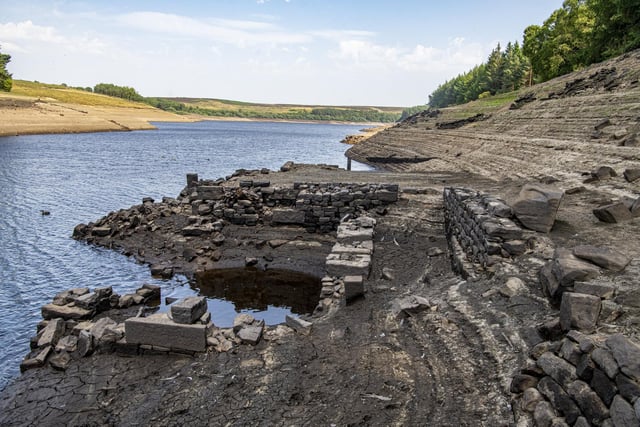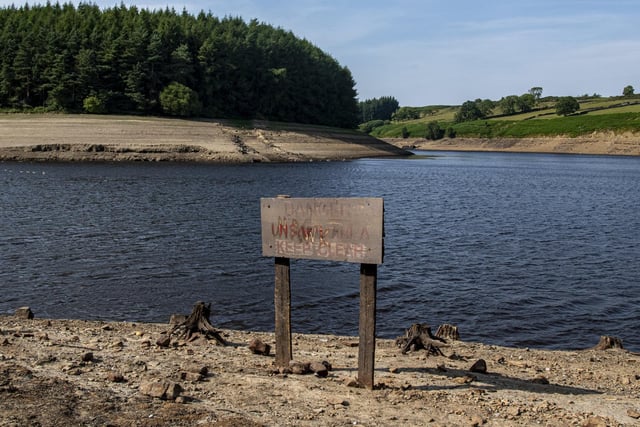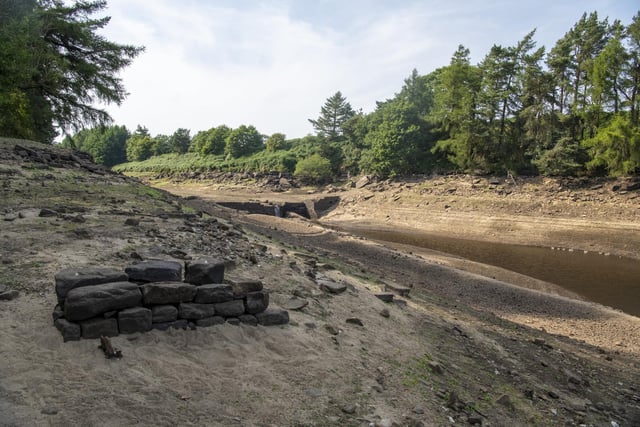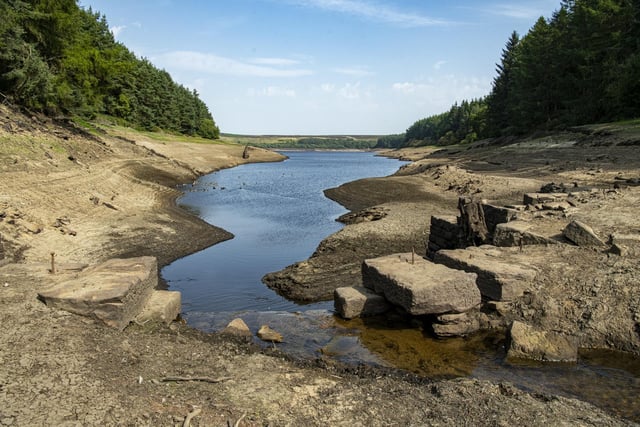West End's foundations are now visible at Thruscross Reservoir, between Harrogate and Otley, where water levels have receded.
The stumps of trees that were felled during the construction work can also be seen.
When Thruscross was built in the 1960s, the small village of West End had to evacuated, flooded and then completely submerged to make way for the reservoir which would supply Leeds with drinking water.
West End was originally built around a flax mill, although the industry was already in decline when the fourth of the Washburn Valley's reservoirs was dug in 1966.
The project sounded the death knell for the village, which was partially derelict, and trees were felled, sacred items removed from the church and bodies exhumed from the graveyard before the buildings disappeared completely.
The remains of the mill itself can still be seen at the edge of the water, and the foundations of other buildings are exposed during drought periods.
The settlement's fate inspired the crime novel In a Dry Season by Peter Robinson, who based the fictional village of Hobb's End and Thornfield, the reservoir which flooded it, on West End. In the story, a body is discovered when water levels fall, and the flax mill is also mentioned.
Archaeological studies were conducted on five of the exhumed bodies dating from the 17th and 18th centuries to find out more about their diet and lifestyle.
Population decline had gathered pace way before the reservoir was built, and West End was referred to as a 'ghost village' as far back as 1911, after the Leeds Corporation had purchased both Low Mill and tracts of land nearby in anticipation of a fourth reservoir in the area. Only six houses were occupied - four of them holiday lets - at the time the land was submerged.




